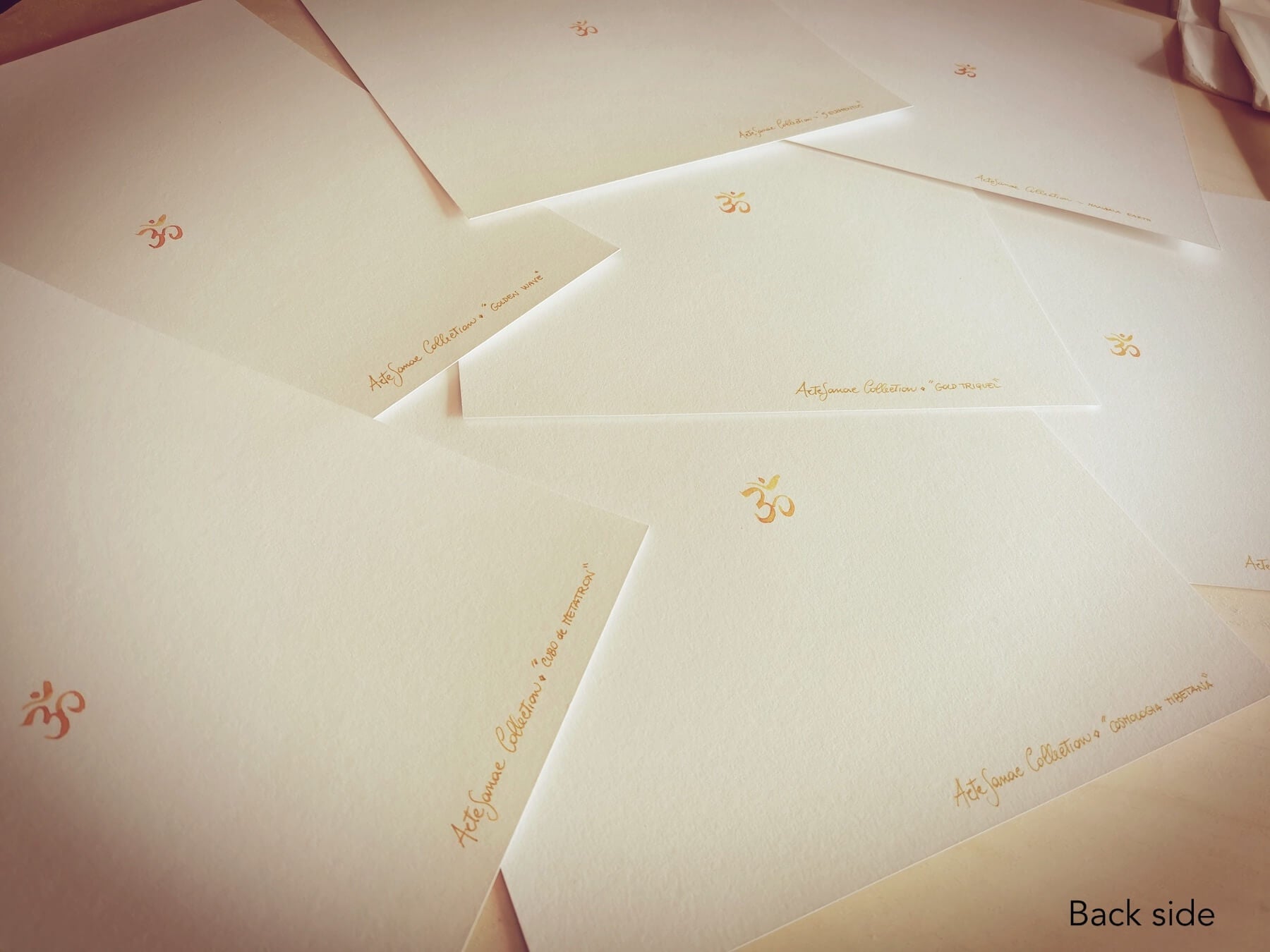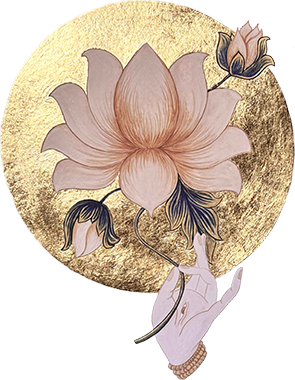
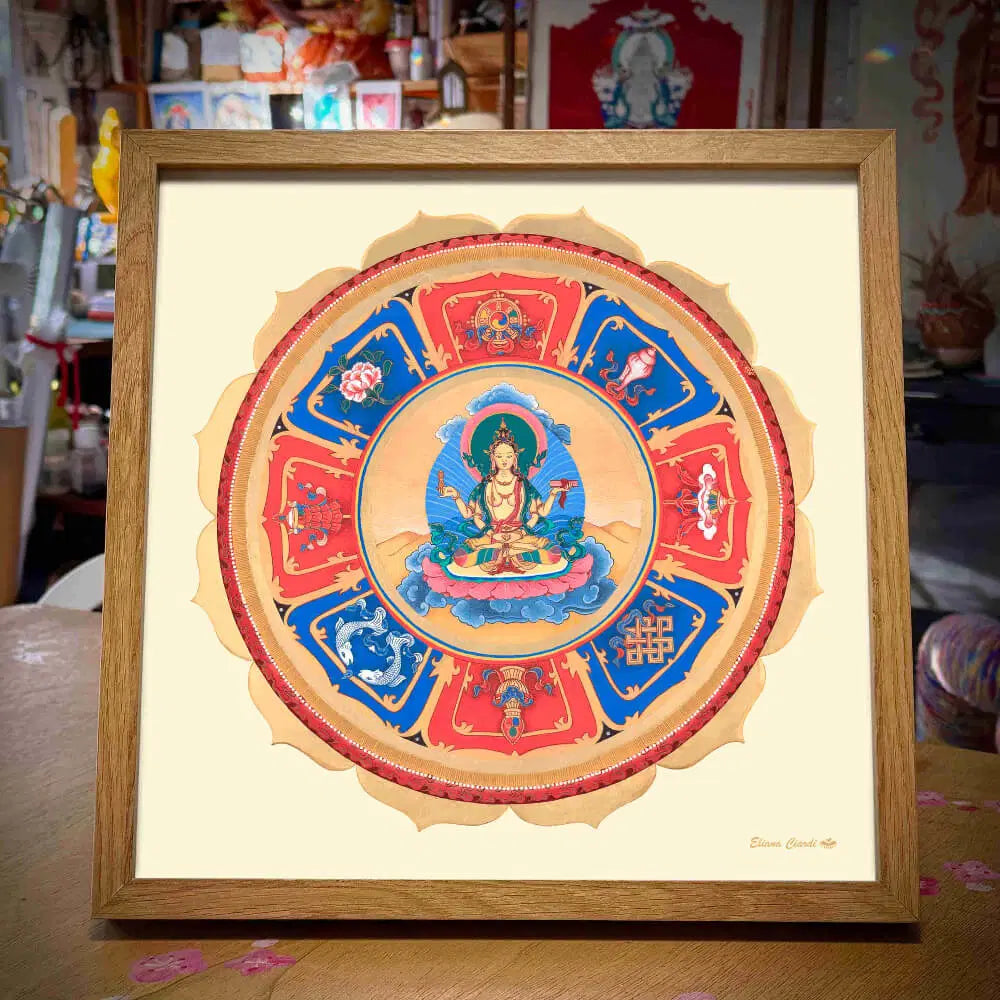

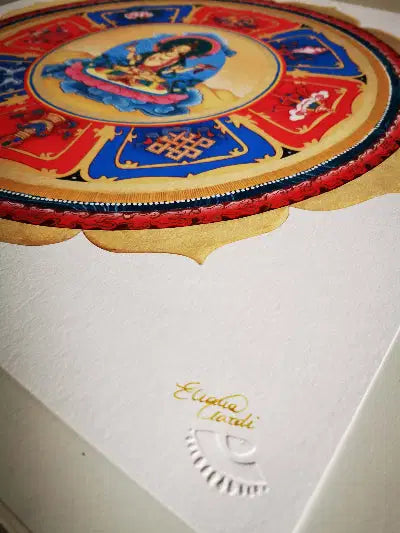
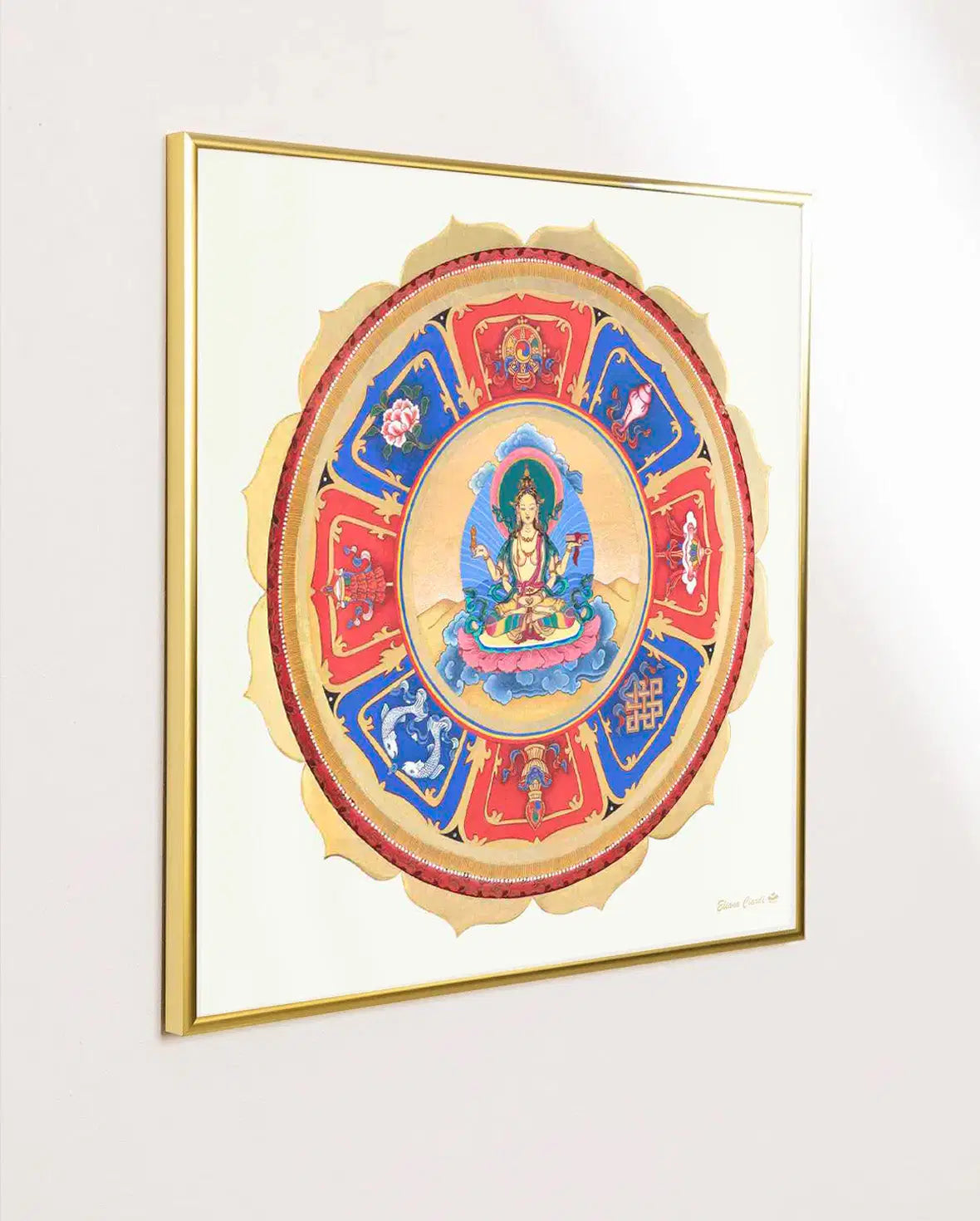

Goddess Prajnaparamita
Sacred Geometry - Mandala - ArteSanae Collection
What is Prajnaparamita? Meaning in Buddhism
Prajnaparamita represents the "perfection of wisdom" in Buddhism. It is considered the mother of all Buddhas and embodies the direct knowledge of the truth that leads to liberation. Prajnaparamita is often personified as a female deity.
In her upper left hand, she holds the Heart Sutra, a sacred text. Her right hand holds a nine-pointed Vajra, which symbolizes the nine paths to enlightenment. Her middle hands are in a gesture of meditation, indicating that the supreme wisdom of reality can be understood through meditation.
Practicing and understanding Prajnaparamita is considered essential on the Bodhisattva path, a path of enlightenment where one seeks to help all sentient beings achieve liberation.
The Eight Auspicious Symbols of Buddhism
The Mandala presents Prajnaparamita surrounded by the Eight Auspicious Symbols:
- Infinite Knot: Symbolizes the interdependence and interconnectedness of all phenomena and beings.
- Shell: Represents the sound of Dharma, signifying the teachings of the Buddha.
- Umbrella: Symbolizes protection from suffering, representing the path to eliminate suffering.
- Lotus Flower: Signifies spiritual growth and purity, as it grows from the mud but remains immaculate.
- Golden Fish: Symbolizes freedom from the fear of drowning in the ocean of suffering.
- Vase of Treasures: Represents the inexhaustible treasures of the Buddha's teachings.
- Wheel of Dharma: Signifies the first turning of the wheel of Dharma by the Buddha and the dissemination of his teachings.
- Banner of Victory: Symbolizes the victory of wisdom over ignorance on the path to enlightenment.
The circle composed of ochre lines and white dots represents the "nadis," the 72,000 channels of subtle energy in the body through which "prana," or life force, flows.
The golden circle represents a calm and clear mind.
The Five Elements and Chakras
The elements of water, fire, earth, and air correspond to different chakras and represent the transformation of negative qualities into positive qualities.
- Water (crown chakra) transforms anger and aggression into clarity.
- Fire (throat chakra) transforms passion and desire into compassion.
- Earth (stomach chakra) transforms pride and selfishness.
- Air (root chakra) transforms envy and jealousy into wisdom.
- Space (heart chakra) transforms ignorance and foolishness into awareness and wisdom.
The Sacred Mantra
“TADYATA OM GATE GATE PARAGATE PARASAMGATE BODHI SVAHA”
The mantra of Prajnaparamita is known as the mantra of the "Heart of Perfection of Wisdom," "Om Gate Gate Paragate Parasamgate Bodhi Svaha." This mantra is part of the Prajnaparamita sutra, considered one of the fundamental texts of Mahayana Buddhism.
Meaning of Each Word
The mantra is pronounced as follows: "Om Gah-teh Gah-teh Pa-rah-gah-teh Pa-rah-sahm-gah-teh Bo-dee Svaha." Each of the words has a profound meaning:
- "Om" is a sacred sound that represents the essence of the universe.
- "Gate" means "gone" or "past."
- "Paragate" means "beyond" or "transcended."
- "Parasamgate" means "completely beyond" or "totally transcended."
- "Bodhi" means "enlightenment" or "awakening."
- "Svaha" is an expression of devotion or reverence.
Spiritual Benefits
Reciting or meditating with this mantra is believed to help develop wisdom, dissolve the illusion of ego, and cultivate a clear and detached mind. It is also considered to purify the mind and generate spiritual benefits for both the practitioner and other beings.
In summary, the mantra of Prajnaparamita is a powerful invocation to attain supreme wisdom and enlightenment, transcending the limitations of the phenomenal world and freeing oneself from suffering.
Overall, this mandala represents a profound spiritual journey, transformation, and the quest for wisdom and enlightenment in Buddhism.





